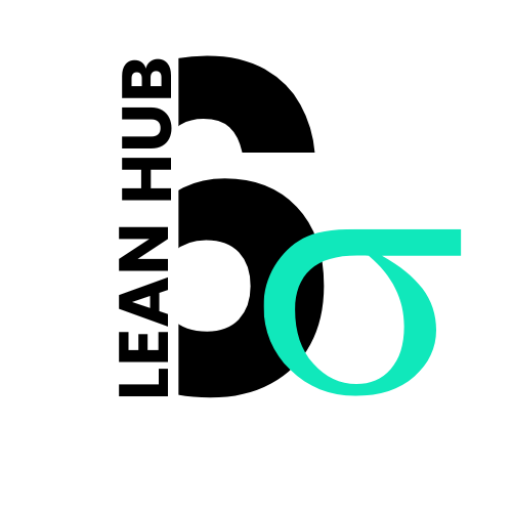Eliminate Waste (Muda): The Key to Efficiency
Muda, a term derived from Japanese, translates to “waste” in English. However, its implications extend far beyond mere physical waste; it encompasses any activity that consumes resources without adding value to the end product or service. In our quest for efficiency and productivity, understanding Muda is crucial.
It serves as a guiding principle in various methodologies, particularly in lean management, where the focus is on maximizing value while minimizing waste. By recognizing Muda, we can identify areas within our processes that require improvement, ultimately leading to enhanced performance and customer satisfaction. As we delve deeper into the concept of Muda, we realize that it manifests in various forms, including overproduction, waiting time, unnecessary transportation, excess inventory, and defects.
Each of these types of waste not only drains resources but also hampers our ability to deliver quality products and services promptly. By fostering a comprehensive understanding of Muda, we can cultivate a mindset that prioritizes efficiency and value creation. This awareness empowers us to scrutinize our operations critically and encourages a proactive approach to identifying and addressing inefficiencies.
Key Takeaways
- Muda refers to the concept of waste in the workplace, including activities that do not add value to the final product or service.
- Different types of waste in the workplace include overproduction, waiting, unnecessary transportation, overprocessing, excess inventory, motion, and defects.
- Strategies to eliminate waste include implementing lean principles, standardizing processes, and continuously improving workflows.
- Lean management plays a crucial role in reducing waste by focusing on value creation, minimizing resources, and optimizing efficiency.
- Training employees to recognize and eliminate waste is essential for creating a culture of continuous improvement and waste reduction in the workplace.
Identifying different types of waste in the workplace
Understanding the Seven Classic Types of Waste
In our workplaces, recognizing the different types of waste is essential for streamlining operations and enhancing productivity. The seven classic types of waste serve as a framework for identifying inefficiencies.
Types of Waste: Causes and Consequences
Overproduction occurs when we produce more than what is needed, leading to excess inventory that ties up resources. Waiting time can arise from delays in processes or dependencies on other tasks, causing bottlenecks that hinder workflow. Transportation waste involves unnecessary movement of materials or information, which can lead to increased costs and time delays. Extra processing refers to any additional steps in a process that do not add value to the final product. Motion waste encompasses unnecessary movements by employees, which can lead to fatigue and decreased productivity. Lastly, defects represent errors or flaws in products or services that require rework or replacement.
Eliminating Waste for Enhanced Efficiency
By systematically identifying these types of waste within our operations, we can take targeted actions to eliminate them and enhance overall efficiency.
Implementing strategies to eliminate waste
Once we have identified the various types of waste present in our workplace, the next step is to implement effective strategies for their elimination.
One of the most powerful approaches is the adoption of lean principles, which emphasize continuous improvement and value creation.
By engaging in value stream mapping, we can visualize our processes and pinpoint areas where waste occurs.
This tool allows us to analyze each step in our workflow and determine whether it adds value or contributes to inefficiency. Another effective strategy involves fostering a culture of employee involvement and empowerment. When we encourage our team members to share their insights and suggestions for improvement, we tap into their firsthand experiences and knowledge.
This collaborative approach not only helps us identify waste but also fosters a sense of ownership among employees. Additionally, implementing standardized work procedures can streamline processes and reduce variability, further minimizing waste. By combining these strategies, we can create a robust framework for waste elimination that drives efficiency and enhances our overall performance.
The role of lean management in reducing waste
| Metrics | Value |
|---|---|
| Reduction in defects | 25% |
| Decrease in lead time | 30% |
| Improvement in productivity | 20% |
| Reduction in inventory levels | 40% |
| Decrease in overproduction | 15% |
Lean management plays a pivotal role in our efforts to reduce waste across various industries. At its core, lean management focuses on creating more value for customers while minimizing resources used in the process. By adopting lean principles, we can systematically identify and eliminate wasteful practices that hinder our productivity.
This approach encourages us to continuously assess our operations and make incremental improvements that lead to significant gains over time. One of the key tenets of lean management is the concept of “just-in-time” production, which aims to produce only what is needed when it is needed. This strategy helps us avoid overproduction and excess inventory while ensuring that we meet customer demands promptly.
Additionally, lean management emphasizes the importance of cross-functional collaboration and communication among teams. By breaking down silos and fostering a culture of teamwork, we can enhance our ability to identify waste and implement effective solutions collectively. Ultimately, lean management serves as a powerful framework for driving efficiency and reducing waste throughout our organization.
Training employees to recognize and eliminate waste
To effectively combat waste in our workplace, it is imperative that we invest in training our employees to recognize and eliminate it. Education plays a crucial role in fostering a culture of awareness and accountability regarding waste reduction. By providing training sessions focused on the principles of lean management and the various types of waste, we equip our team members with the knowledge they need to identify inefficiencies in their daily tasks.
Moreover, hands-on training initiatives such as workshops or simulations can further enhance our employees’ understanding of waste elimination techniques. These interactive experiences allow them to apply theoretical concepts in real-world scenarios, reinforcing their learning and encouraging them to think critically about their work processes. As we empower our employees with the skills necessary to recognize waste, we create a workforce that is not only more efficient but also more engaged in the continuous improvement journey.
Using technology to streamline processes and reduce waste
In today’s fast-paced business environment, leveraging technology is essential for streamlining processes and reducing waste effectively. Various technological tools can help us automate repetitive tasks, enhance communication, and improve data analysis capabilities. For instance, implementing project management software can facilitate better collaboration among team members while providing real-time insights into project progress.
This transparency allows us to identify potential bottlenecks early on and take corrective actions before they escalate into significant issues. Additionally, data analytics tools enable us to analyze performance metrics and identify trends related to waste generation. By harnessing the power of data-driven decision-making, we can make informed choices about process improvements and resource allocation.
Furthermore, technologies such as artificial intelligence and machine learning can optimize supply chain management by predicting demand patterns and minimizing excess inventory. By embracing these technological advancements, we position ourselves to streamline operations effectively while significantly reducing waste.
Measuring the impact of waste elimination on efficiency
To truly understand the effectiveness of our waste elimination efforts, it is crucial that we establish metrics for measuring their impact on overall efficiency. Key performance indicators (KPIs) such as cycle time reduction, cost savings, and customer satisfaction scores provide valuable insights into how our initiatives are performing. By regularly tracking these metrics, we can assess whether our strategies are yielding the desired results or if adjustments are necessary.
Moreover, conducting regular audits of our processes allows us to evaluate the sustainability of our waste reduction efforts over time. These audits help us identify any new sources of waste that may have emerged as a result of changes in operations or market conditions. By maintaining a continuous feedback loop through measurement and evaluation, we ensure that our commitment to eliminating waste remains an ongoing priority within our organization.
Creating a culture of continuous improvement and waste reduction
Ultimately, creating a culture of continuous improvement and waste reduction requires commitment from all levels of our organization. It begins with leadership setting the tone by prioritizing efficiency and encouraging open communication about waste-related issues. When leaders actively participate in improvement initiatives and demonstrate their commitment to reducing waste, it inspires employees at all levels to engage in similar efforts.
Furthermore, recognizing and rewarding employees for their contributions to waste reduction fosters a sense of ownership and accountability within the workforce. Celebrating successes—no matter how small—reinforces the importance of continuous improvement as an integral part of our organizational culture. By embedding these principles into our daily operations and decision-making processes, we cultivate an environment where everyone feels empowered to contribute to waste reduction efforts actively.
In conclusion, understanding Muda and its implications for our workplace is essential for driving efficiency and enhancing productivity. By identifying different types of waste, implementing targeted strategies for elimination, leveraging technology, measuring impact, and fostering a culture of continuous improvement, we position ourselves for long-term success in reducing waste across our organization.
Through collective effort and commitment to these principles, we can create a more efficient workplace that delivers greater value to our customers while minimizing resource consumption.
FAQs
What is Muda?
Muda is a Japanese term that translates to “waste” in English. It refers to any activity or process that does not add value to the end product or service.
What are the 7 types of Muda?
The 7 types of Muda, as identified in the Toyota Production System, are: overproduction, waiting, transportation, inappropriate processing, unnecessary inventory, unnecessary motion, and defects.
How can Muda be eliminated?
Muda can be eliminated through the implementation of lean principles and continuous improvement practices. This involves identifying and eliminating waste in processes, improving efficiency, and maximizing value for the customer.
What are the benefits of eliminating Muda?
Eliminating Muda can lead to increased productivity, reduced costs, improved quality, shorter lead times, and a more efficient and effective operation overall.
What are some common tools and techniques for eliminating Muda?
Common tools and techniques for eliminating Muda include value stream mapping, 5S (Sort, Set in order, Shine, Standardize, Sustain), Kanban, Just-in-Time production, and Kaizen (continuous improvement).
How can businesses identify Muda in their processes?
Businesses can identify Muda by closely examining their processes and looking for activities that do not add value to the end product or service. This can be done through observation, data analysis, and engaging employees in the process.






